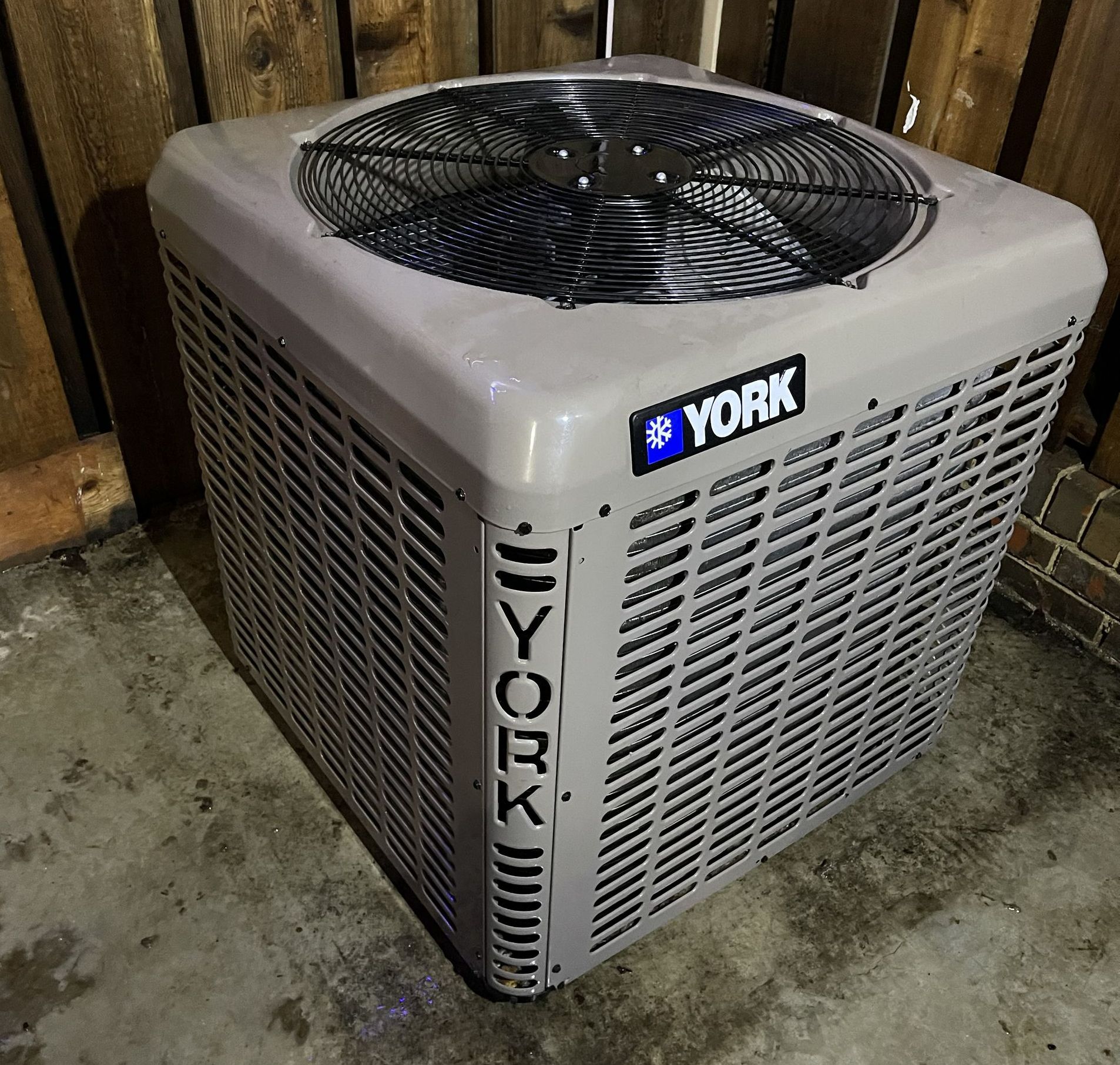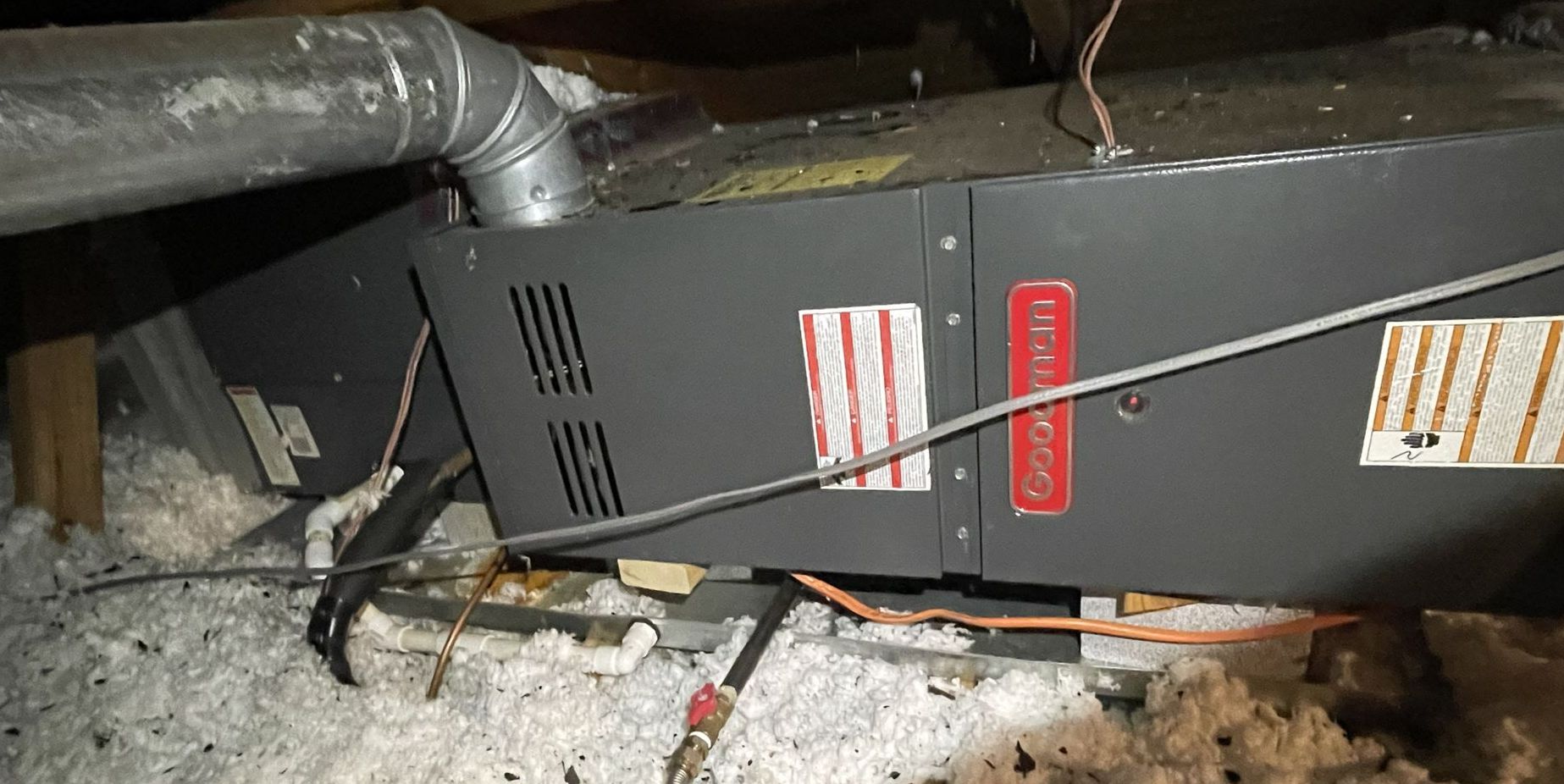Three Parts of a Gas HVAC System
Most people in Birmingham Alabama with traditional brick-and-mortar homes have a central air conditioning system with gas heat (i.e., a furnace). If you are like me, you like to know a little about what you are purchasing, specifically for such a large and important item as an HVAC system. In this article, we will educate homeowners on the main parts of a gas HVAC system--the condenser, evaporator coil, and furnace--by discussing the following:
- locating each of the three components,
- British Thermal Units--the measurement of heating and cooling your home,
- what components cool your home, and
- what components heat your home.
Locating Each Component of your Gas HVAC System
Outdoor Condenser

Indoor furnace (right receptacle) & evaporator coil (left receptacle)

British Thermal Units (BTUs)
Your HVAC system's capacity for heating and cooling your home is measured in British Thermal Units (BTUs). BTU is a unit of heat; One BTU is approximately the energy released by burning one match. You might notice that HVAC system capacities are also measured in tons. 1 ton is equivalent to 12,000 BTUs of heat transfer per hour (BTU/hr), so a 4-ton system has 48,000 BTU/hr. The air conditioning system removes the rated BTUs/hr of heat from your home, while your furnace will transfer the rated BTU/hr into your home. Residential homes have HVAC systems between 2 and 5 tons, and the general rule of thumb is that each ton covers 500-600 sq feet of a home.
To put this a real scenario, a 2,200 square foot home will generally have a 4-ton; a 4-ton usually covers 2,000 to 2,400 square feet depending on how well the house is insulated and ceiling height.
It is important to note that most HVAC systems have more BTU/hr for heating than cooling. Since it is more economical to manufacture a limited selection of furnaces, you will see the same furnace matched with two different sizes of AC systems.
Cooling Components--Condenser and Evaporator Coil
Your condenser and evaporator coil work together to cool your home and are connected by two copper line sets. Both copper line sets are used to transfer refrigerant. You can differentiate the two line sets since one is larger than the other; the larger line set transfers gas and the smaller one transfers liquid refrigerant. These copper line sets can last up to 100 if they are maintained and insulated properly. If you are replacing your system, HVAC Home Pros recommend keeping and cleaning out your existing line sets to help reduce your installation cost.
Because your condenser on a Gas HVAC system only works to cool your home, it is a straight cool system. It has only one cooling cycle. This is a sharp contrast to a heat pump condenser that has at least two cycles--one to heat your home and one to cool your home.
Your coil, which is found inside your home, is formally known as an evaporator coil. During hot months, it becomes very cold and absorbs heat to cool your home; this cool air is then pushed into your home by your blower motor (located in your furnace).
The refrigerant in the line set transfers the heat absorbed from your home into the evaporator coils and then releases the heat across the condensing coils. The fan located in the condensing coil helps speed up the heat transfer process across the condensing coils by rapidly moving air across the coils.
Heating Components--Gas Furnace
Your gas furnace works independently of your condenser and evaporator coil to heat your home. The gas furnace is connected to your home's gas line--see picture below--and has an exhaust vent connection to take out fumes. To heat your home, the gas furnace ignites to burn natural gas and heat your air. If you have a natural gas bill, you are likely to have a gas furnace.
Because the furnace is physically separate from the condenser and coil, you can replace the condenser and coil without replacing the furnace, but this is not traditionally recommended if you are trying to increase your unit's efficiency. The furnace houses the blower motor that the HVAC system uses to move all conditioned air throughout your home; the efficiency of the home is then bottlenecked by the inefficient blower motor even if the new straight cool system is more efficient.
Reach out Anytime, We are always here to help!
Thank you for contacting HVAC Home Pros.
We will get back to you as soon as possible.
Please try again later.
Quick & Reliable
We will answer any calls or questions in less than 5 minutes!
Don't be a stranger!
6 Office Park Cir suite 215, Mountain Brook, AL 35223
1201 Powder Plant Rd #7, Bessemer, AL 35022
Air Conditioning Services
AC Repair
AC Replacement
AC Installation
AC Maintenance
Mini-Split Systems
Heating Services
Heating Repair
Heating Replacement
Heating Installation
Heating Maintenance
Heat Pumps
All Rights Reserved | HVAC Home Pros - Air Conditioning Repair and Installation | AL # 22285
